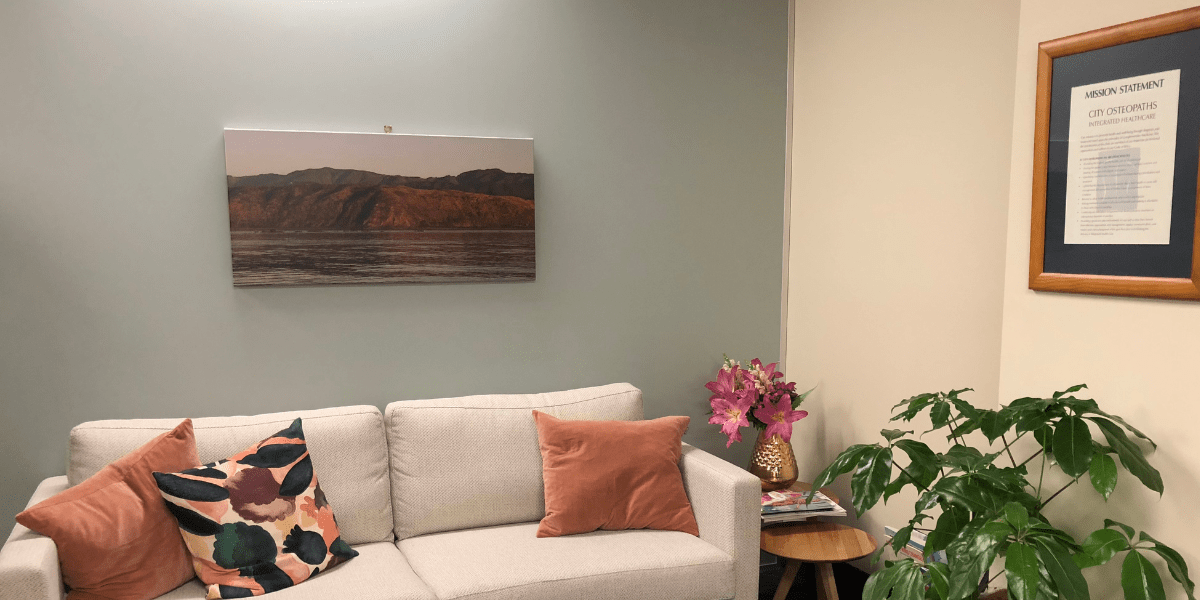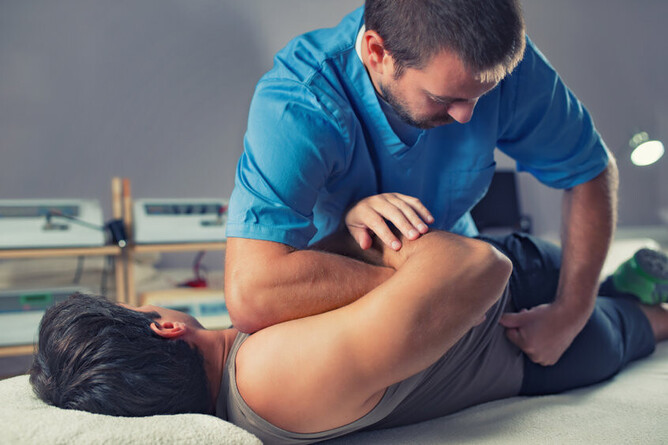OSTEOPATHY IN SPORT FOR PEAK ATHLETIC PERFORMANCE
A well-balanced and injury-free body is the dream of every athlete. Unfortunately, this is not always the reality. Osteopathy in sport has been used in different countries to prevent and treat injuries, giving the athletes a better quality of life, and helping them to achieve better results, no matter which kind of sport we are talking about.
There are a great number of top athletes that benefit from osteopathic treatment. In 1998, just after winning the World Cup, the former football player Zinedine Zidane said: “I owe a large part of my presence in the final match to my osteopath.” Fourteen years after that, he talked about Osteopathy again: “treating yourself naturally, with less medication and anti-inflammatories, allows you to preserve yourself after your sports career and age better". Currently, many other athletes utilise Osteopathic Manipulative Treatment (OMT), for example the Polish tennis player Jerzy Janowicz, the British olympic champion Mo Farah, and the French Real Madrid’s football player Karim Benzema.Therefore, it is no surprise that a team of osteopaths have been present in all Olympic Games since ‘London 2012’. That was the first time that 25 osteopathic health professionals joined the health team of the biggest sporting event in the world. There were more than 900 treatment sessions there. In ‘Rio 2016’, the number of osteopaths that joined the health team increased to 30. Consequently, the osteopathic approach has become a reality for prevention and treatment of injuries for high performance athletes.
However, amateur athletes can also benefit from osteopathic treatment to increase their health status, quality of life and improve their performance. Presenting a truly holistic approach, Osteopathy considers the body as a single unit, where all the systems are interrelated and interdependent, also considering all the other aspects that are common to every human being, like the psychological, mental, social, environmental and spiritual fields.
Another singular feature of the osteopathic approach is its unique type of diagnosis, termed osteopathic or somatic dysfunction. These dysfunctions can facilitate the emergence of physiological adaptations in the human body, both in short and long term, that can interfere with the athlete’s performance, even without the manifestation of pain or other symptoms. By diagnosing and treating these dysfunctions pre-emptively, it is possible to avoid many future injuries and pain and also improve the practice and performance of the chosen sport. The majority of the dysfunctions of the musculoskeletal system have a traumatic cause. So, it is essential to look for osteopathic assistance after any trauma, even if it appears to be a not so severe one. Then the professional can diagnose and treat very specifically, helping your body to find a good balance again, and prevent the loss of the ability to adapt, decreasing the likelihood of injuries and pain.
In osteopathic training, much importance is given to develop the hands on palpatory skills to a very high level. Because of that, the osteopath's unique palpatory skills ensure an enormous advantage in determining the location, extent and associated manifestations of sports injuries.
Historically speaking, Dr Andrew Taylor Still, the developer of Osteopathy, in the late 1800’s presented the importance of the balance and coordination between the structure and function in the body, and the importance of the musculoskeletal system for human health. Dr Still helped many athletes of his time, when sports medicine did not yet exist. For this reason, Dr Still was also considered the forerunner of sports medicine.
Keeping in mind that what really matters is treating the root of the problem and not only the symptoms, these are some of the many benefits of Osteopathic Manipulative Treatment (OMT) for the amateur and elite athletes:
Injury prevention
OMT does not treat only acute injuries, but mainly helps to prevent them from occurring. That is because the osteopath seeks the root of the problem, helping the body to find its own balance, preventing injuries becoming repetitive and constant.
Avoid or reduce medication use
All treatment techniques used in the OMT are manual, that is, without the use of any type of medication. It avoids the occurrence of side effects and is especially important for top athletes who have a series of restrictions on the medications they can take.
Helps to speed up the recovery
The osteopathic treatment helps athletes to achieve a faster recovery. It uses a large arsenal of techniques, each one with different purposes, working in different tissues, increasing treatment specificity. The healing process of injuries is also optimised by the global and holistic vision of the Osteopathy, that leads the practitioner to do a complete analysis of each patient, not only focusing on minimise the symptoms of the injury, but on treating the cause of it.
Promotes a higher quality of life
As Osteopathy does not only seek to treat diseases or injuries, it understands that a balanced body is essential for the individual to enjoy more well-being and better quality of life.
For athletes, amateur and professional, suffering with fewer injuries and having a biomechanically balanced body is essential, as it improves their results, reduces pain and recurrent problems from sporting practice.
Improves Performance
Without injuries, pain, and training with a well balanced body, athletes tend to perform in their highest level. Even without symptoms, it is recommended that athletes insert OMT in their routine, as it can treat the causes of possible future injuries that can then be avoided. Integrating Osteopathy in pre-competition period and post-competition recovery might be the turning point to increase the performance and achieve your goals as a sports person.
As you have seen, Osteopathy in the sports’ field has multiple applications and can be very beneficial for athletes. This is the reason why it gains more importance in this area each day.
References
Still Jr CE. Frontier Doctor – Medical Pioneer: The Life and Times of A. T. Still and His Family. Kirksville, MO: The Thomas Jefferson University Press; 1907 (Reprinted 1991):205-216
Educational Council on Osteopathic Principles. Glossary of Osteopathic Terminology. Washington, DC: American Association of Osteopathy Colleges: 2001.
Denslow JS. Pathologic evidence for the osteopathic lesion: The Known, unknown and controversial. En: Beal MC, ed. Selected Papers of John Stedman Denslow, DO. Indianápolis, IN: American Academy of Osteopathy; 1993: 154-160.
Korr I. The neural basis of the osteopathic lesion. En: Peterson B, ed. The Collected Papers of Irvin M. Korr. Colorado Springs, CO: American Academy of Osteopathy, 1979: 120-127.
Grant M, et al. The usage of multidisciplinary physical therapies at the Rio de Janeiro 2016 Olympic Summer Games: an observational study. Braz J Phys Ther. 2020
To find out more about the author Diego, click here


